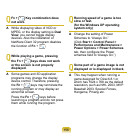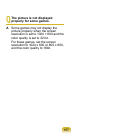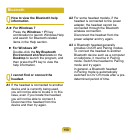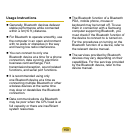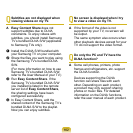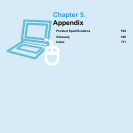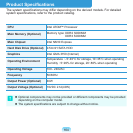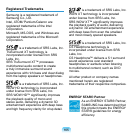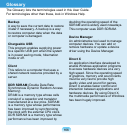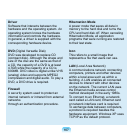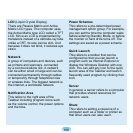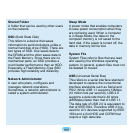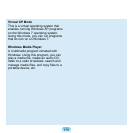
166
Glossary
The Glossary lists the terminologies used in this User Guide.
For terminologies other than these, look in Windows Help.
Backup
A way to save the current data to restore
it later if necessary. A backup is a way
to restore computer data when the data
or computer is damaged.
Chargeable USB
This program enables supplying power
to a specic USB port when the system
is in power saving mode, hibernation
mode or off.
Client
This refers to a computer that uses a
shared network resource provided by a
server.
DDR SDRAM
(Double Data Rate
Synchronous Dynamic Random Access
Memory)
DRAM is a memory type whose cells
consist of a capacitor and transistor
manufactured at a low price. SDRAM
is a memory type whose performance
has been improved by synchronizing
the clock with the external CPU clock.
DDR SDRAM is a memory type whose
performance has been improved by
doubling the operating speed of the
SDRAM and is widely used nowadays.
This computer uses DDR SDRAM.
Device Manager
An administrative tool used to manage
computer devices. You can add or
remove hardware or update a device
driver using the Device Manager.
Direct X
An application interface developed to
enable Windows application programs
to access hardware devices at a very
high speed. Since the operating speed
of graphics, memory and sound cards
must be very fast to provide high
quality video and sound for games,
Direct X enables faster control and
interaction between applications and
hardware devices. By using Direct X,
the multimedia performance of Windows
has been hugely improved.



